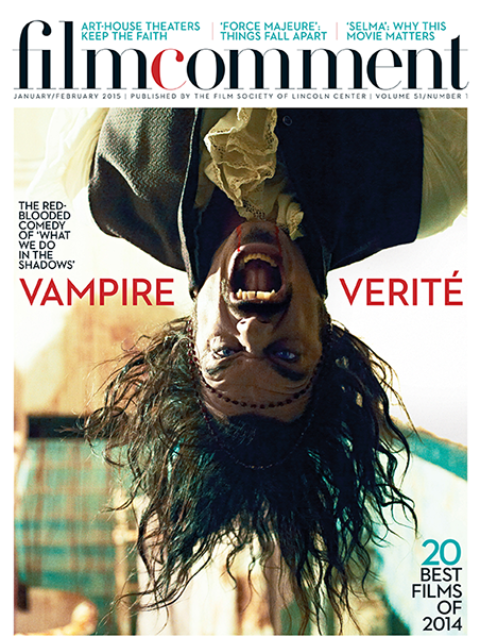
To say that Peter Strickland traffics in Seventies Euro-schlock is to tell only half the story. True, he’s better than anyone this side of Todd Haynes at conjuring the textures and tones of anterior subgenres, in Strickland’s case the pulp art imports of Jess Franco and Dario Argento. But underneath the veneer of exploitation is the last thing you’d expect—a portrait of midlife angst, a longing for stability and acceptance in a pitiless world. In the cinematic Rubik’s Cube of Berberian Sound Studio (12), he uses the giallo mode to embroider the plight of a British audio technician (Toby Jones), toiling miserably in the recording studio of an Italian horror film. As his colleagues become vindictive and his mother’s correspondence increasingly cold, his implosion is reflected in the outré aesthetic, but the source of dread is more piercing than a slasher’s blade—it’s the primal fear of estrangement. Berberian Sound Studio is Lost in Translation dressed up as Suspiria.
By the same token, The Duke of Burgundy is The Killing of Sister George cloaked as Vampyros Lesbos. In a forest-bound community—unspecified but shot in the Brit director’s adopted Hungary—Cynthia (Sidse Babett Knudsen), an entomologist in her mid-forties, engages in kinky role-playing with her youthful paramour, Evelyn (Berberian Sound Studio’s Chiara D’Anna). Their habitual scenario casts Evelyn as a subservient maid, charged with massaging the feet of her disparaging employer and washing her undergarments by hand. While in their fantasies the childlike Evelyn never earns Cynthia’s approval, we learn from notes stashed throughout their home that it’s Evelyn who’s dictating terms. The besotted but increasingly insecure Cynthia must acquiesce to her lover’s fabrications, even to the point of commissioning a human toilet (don’t ask), and must take exacting direction on her line readings and ward-robe. As the younger woman’s demands grow more dispiriting to her love-starved provider, it becomes clear that insatiable Evelyn is about to take wing.

Strickland’s film is most strikingly a bacchanal for the senses, with Nick Knowland’s widescreen digital camera proffering tracking shots of interior opulence worthy of Visconti, and a dream sequence of astonishing fecundity, both in form and content. (Note the point from which it emanates.) Strickland’s alertness to sound design carries over from Berberian Sound Studio, with scarcely audible insect noises (which, we are told, distinguish species) mingling with an evocative, Rosemary’s Baby–esque score by Cat’s Eye. And sound is absolutely crucial to conveying the nature of Evelyn’s favorite behind-closed-doors humiliation.
Lest it come across as an elaborately appointed chimera of misery, it must be said that The Duke of Burgundy, to the receptive viewer, is screamingly funny. From the opening titles, which include credits for perfume and lingerie, to the listing of all featured insects at the end (under common and scientific names), the film takes care to undercut what may be perceived as self-consciousness. A visit from a fetish-bed carpenter (impeccable Fatma Mohamed) both calcifies the dynamic of the focal pair and finds gallows humor worthy of Fassbinder in their toxic codependency.
The Duke of Burgundy, named for a variety of butterfly, synthesizes cultural sources as sundry as the Sapphic playacting of Jean Genet’s The Maids, the psychic conjunction of Bergman’s Persona, and the insect symbolism of Wyler’s The Collector. (Further surrealism derives from the complete absence of men in the village, and the impression that all its inhabitants are professors of entomology.) Above all the film invokes the art-house porn affect instantly recognizable to retro trash enthusiasts. But far from being mere pastiche or parody, the film manifests Strickland’s rigorous regard for the form and determination to both honor and elevate it. With deeply committed performances (particularly from Knudsen, masterfully limning the helplessness underlying her stoic demeanor), The Duke of Burgundy holds the viewer as riveted and exposed as a butterfly pinned to a board.








